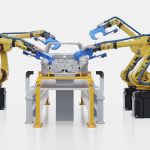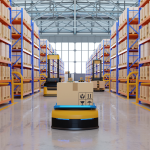AI-powered personalization is winning over customers—but behind the scenes, it’s forcing supply chains to confront rising complexity, fragmented inventory, and faster fulfillment demands.
AI Raises Expectations—Faster Than Supply Chains Can React
AI has changed the game in omnichannel retail. Algorithms now tailor product recommendations, marketing messages, and even homepage layouts to individual customers—raising the bar for every interaction. But while these personalized experiences drive engagement, they also create ripple effects through the supply chain.
Each personalized offer shifts demand patterns, expands SKU mixes, and puts pressure on fulfillment teams to deliver with precision across multiple channels. For supply chain leaders, this isn’t just a data problem—it’s an operational one. The system behind the screen has to catch up to promises being made in milliseconds.
Walmart, Nike, and Starbucks have each leaned into AI-driven personalization. From loyalty-based segmentation to predictive app experiences, they’re setting new expectations for convenience and accuracy. But that success depends on the ability to fulfill dynamically—wherever the customer shops.
The Real Bottleneck: Inventory Visibility and Agility
According to MIT’s latest omnichannel study, 55% of companies cited real-time product availability as a growing challenge in the face of AI-driven personalization. Inventory accuracy was close behind at 47%. In other words, the smarter the front end gets, the more exposed the gaps in fulfillment become.
“Personalization works when your inventory can deliver on the promise,” says Dr. Eva Ponce of MIT. “Otherwise, AI only increases the risk of disappointing the customer.”
Virtual try-on apps and AI-fueled recommendations may reduce returns—but they also fragment demand and tighten delivery expectations. Even small shifts in predicted sizing or style preferences can alter fulfillment routes and reorder patterns. At scale, this puts enormous strain on systems designed for predictability, not hyper-flexibility.
Retailers are responding by doubling down on inventory management tech. Real-time visibility tools, predictive allocation engines, and intelligent replenishment models are no longer nice-to-haves—they’re essential infrastructure for staying credible in a personalized retail landscape.
The Trade-Off Supply Chains Must Reconcile
For all the benefits AI brings to customer experience, there’s a growing cost beneath the surface: complexity. Personalization demands more data, more precision, and faster reaction times from supply chains that were already under pressure.
Leaders at Kroger and Coca-Cola are taking a dual approach—partnering with external AI vendors while building proprietary tools to integrate personalization with supply chain performance. But even these investments are strategic bets in an evolving field. The real competitive advantage isn’t just having the tech—it’s making sure it feeds both the front-end and the back-end in equal measure.
Personalization may drive loyalty, but only if supply chains are agile enough to meet those personalized promises consistently. For operations leaders, that means asking a harder question: not just “Can we personalize?”—but “Can we deliver, every time, at scale?”
Because the end game isn’t just smarter customer journeys. It’s smarter, faster, and more coordinated supply chains.







